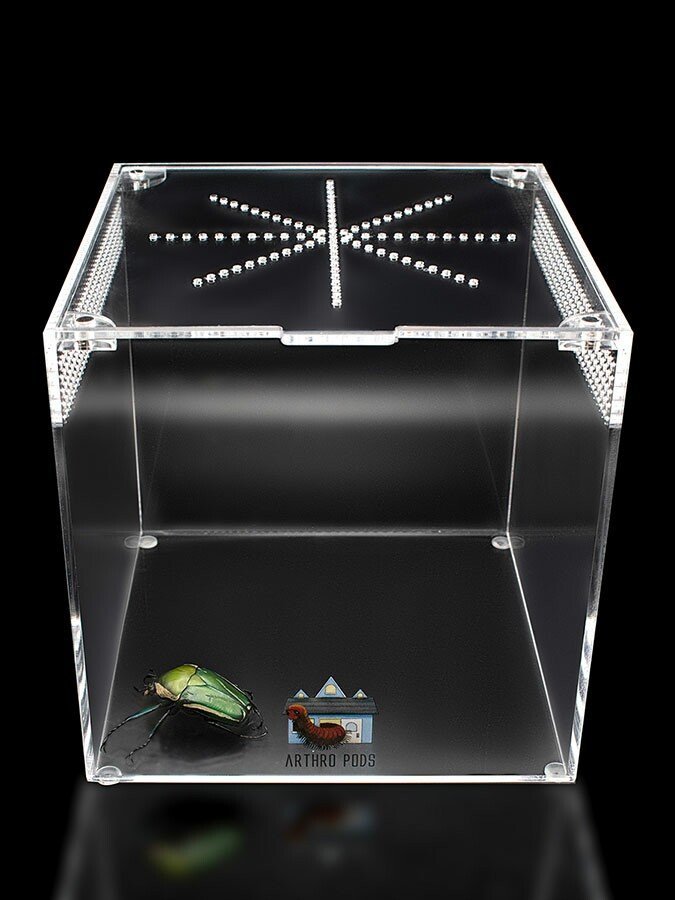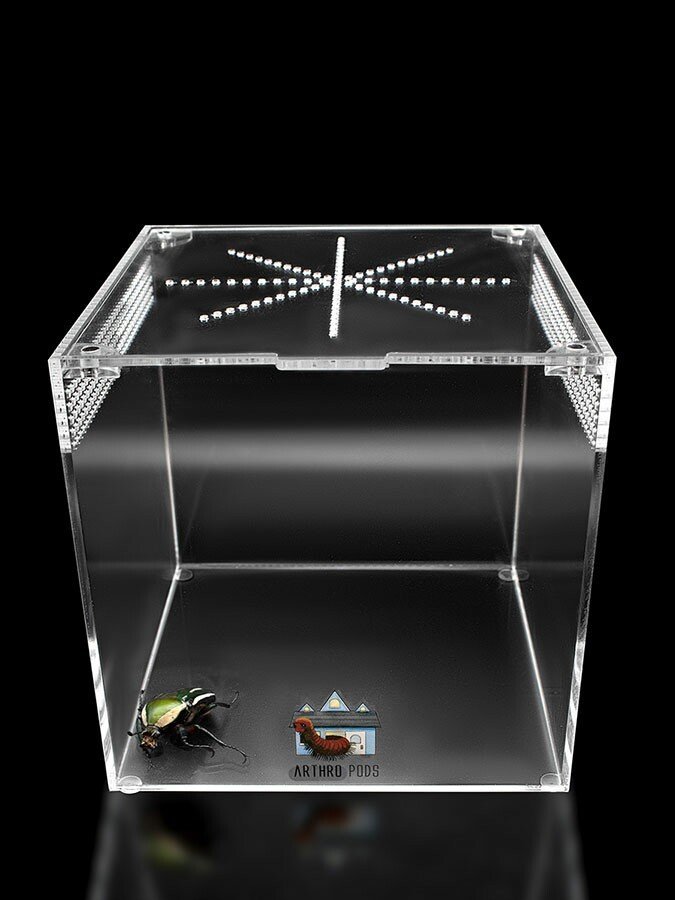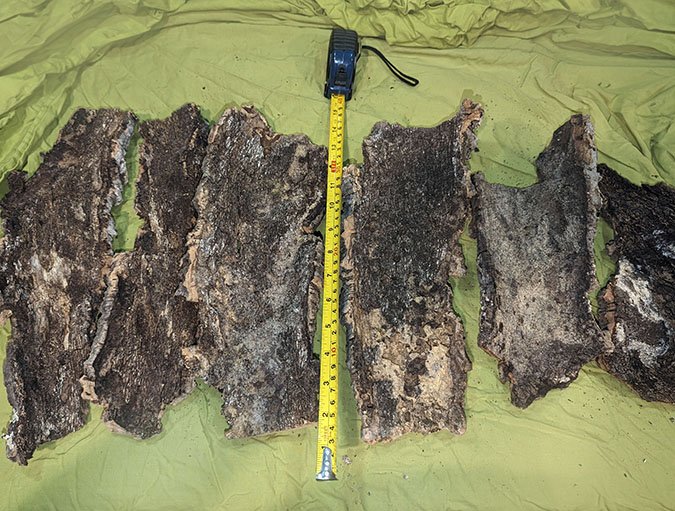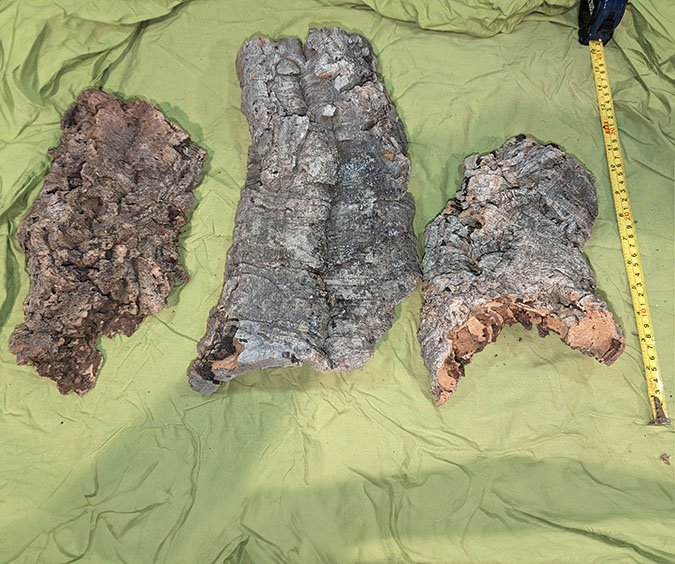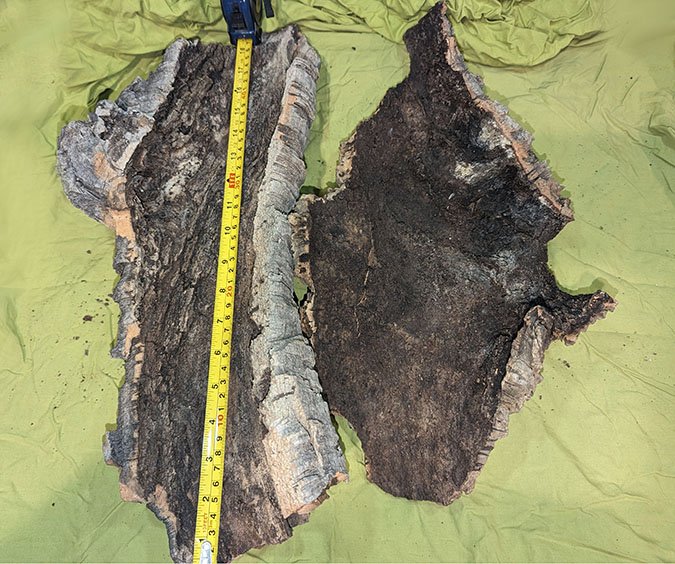Selenocosmiinae sp 'Sarawak'
Selenocosmiinae sp. 'Sarawak', commonly known as the Sarawak Banded Tarantula, is a rare and visually striking Old World tarantula originating from Sarawak's dense, humid rainforests, Malaysian Borneo. As an undescribed species within the Selenocosmiinae subfamily, it remains scientifically unclassified at the genus level. Still, it is strongly believed to be related to the Phormingochilus, Lampropelma, and Omothymus lineages—arboreal or semi-arboreal spiders known for their speed, defensive nature, and stunning coloration.
This species is named for its contrasting leg banding, which often appears in cream, yellow, or bronze against a dark brown or slate-black base. The banded pattern, which becomes more prominent as the spider matures, gives it a fierce, tiger-like aesthetic and makes it stand out among Southeast Asian arboreals. Its carapace may display a subtle metallic or golden sheen, especially after a fresh molt.
The Sarawak Banded Tarantula in captivity will readily take to vertical cork bark retreats and construct silk curtains or deep web tunnels, often sealing itself in for extended periods during pre-molt or when establishing territory. Like other Selenocosmiinae, this species is fast, highly defensive, and potent in venom, with no urticating hairs and a strong tendency to flee or posture when disturbed. Because of these traits, it is not suitable for handling and is best reserved for advanced keepers.
Selenocosmiinae sp. 'Sarawak', commonly known as the Sarawak Banded Tarantula, is a rare and visually striking Old World tarantula originating from Sarawak's dense, humid rainforests, Malaysian Borneo. As an undescribed species within the Selenocosmiinae subfamily, it remains scientifically unclassified at the genus level. Still, it is strongly believed to be related to the Phormingochilus, Lampropelma, and Omothymus lineages—arboreal or semi-arboreal spiders known for their speed, defensive nature, and stunning coloration.
This species is named for its contrasting leg banding, which often appears in cream, yellow, or bronze against a dark brown or slate-black base. The banded pattern, which becomes more prominent as the spider matures, gives it a fierce, tiger-like aesthetic and makes it stand out among Southeast Asian arboreals. Its carapace may display a subtle metallic or golden sheen, especially after a fresh molt.
The Sarawak Banded Tarantula in captivity will readily take to vertical cork bark retreats and construct silk curtains or deep web tunnels, often sealing itself in for extended periods during pre-molt or when establishing territory. Like other Selenocosmiinae, this species is fast, highly defensive, and potent in venom, with no urticating hairs and a strong tendency to flee or posture when disturbed. Because of these traits, it is not suitable for handling and is best reserved for advanced keepers.


Selenocosmiinae sp. 'Sarawak', commonly known as the Sarawak Banded Tarantula, is a rare and visually striking Old World tarantula originating from Sarawak's dense, humid rainforests, Malaysian Borneo. As an undescribed species within the Selenocosmiinae subfamily, it remains scientifically unclassified at the genus level. Still, it is strongly believed to be related to the Phormingochilus, Lampropelma, and Omothymus lineages—arboreal or semi-arboreal spiders known for their speed, defensive nature, and stunning coloration.
This species is named for its contrasting leg banding, which often appears in cream, yellow, or bronze against a dark brown or slate-black base. The banded pattern, which becomes more prominent as the spider matures, gives it a fierce, tiger-like aesthetic and makes it stand out among Southeast Asian arboreals. Its carapace may display a subtle metallic or golden sheen, especially after a fresh molt.
The Sarawak Banded Tarantula in captivity will readily take to vertical cork bark retreats and construct silk curtains or deep web tunnels, often sealing itself in for extended periods during pre-molt or when establishing territory. Like other Selenocosmiinae, this species is fast, highly defensive, and potent in venom, with no urticating hairs and a strong tendency to flee or posture when disturbed. Because of these traits, it is not suitable for handling and is best reserved for advanced keepers.
What's the ideal diet for a Sarawak Banded Tarantula?
All Tarantulas can eat a variety of feeders. Stick to crickets, dubia roaches, silkworms, horned worms occasionally, and a superworm or mealworm as the occasional treat!
How should I keep a Sarawak Banded Tarantula?
You can start with the Fossorial Fissure Small enclosure for this particular creature. When they are about ⅓ the size, you will want to go to the Fossorial Fissure Medium or Fossorial Fissure Large enclosure. Feed them as slings once a week, twice if their opisthosoma (abdomen) looks small, but if the opisthosoma is wider than their prosoma (pneumothorax), then wait a couple of days to feed. For juveniles or adults, stick to feeding once a week, nothing larger than their opisthosoma. Make sure to keep a full water dish at all times; wider and deeper is preferred.
How long could a Sarawak Banded Tarantula live?
Females are believed to live upwards of 15+ years, and males not exceeding around 4 years of age. All estimates are based on multiple sources.




